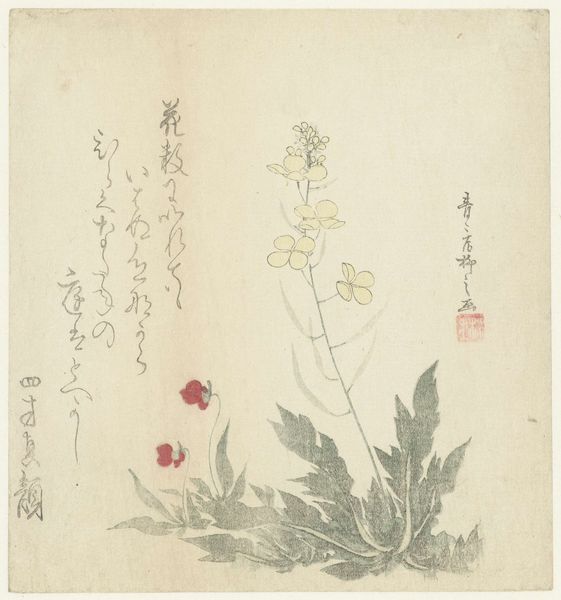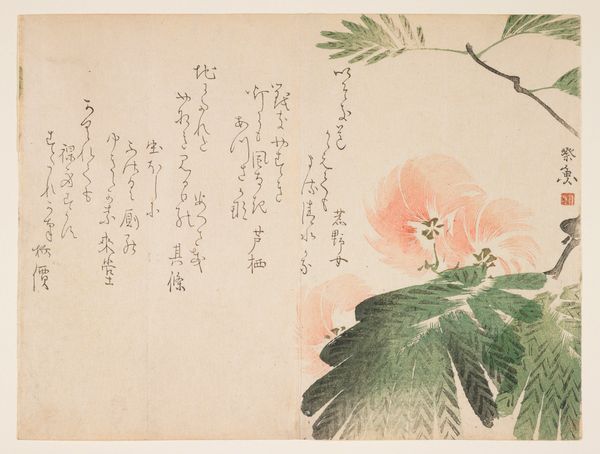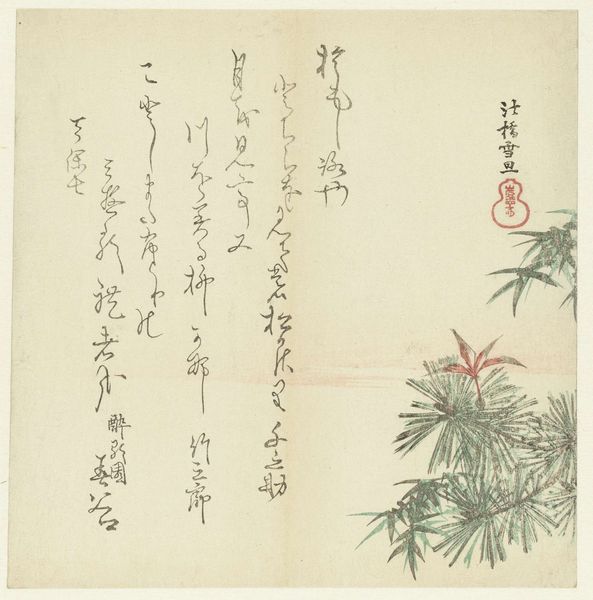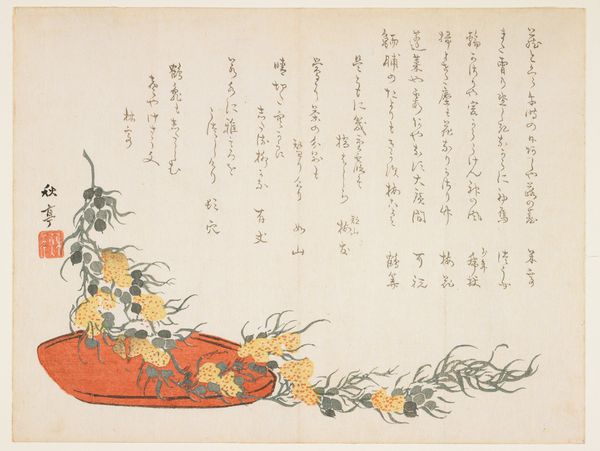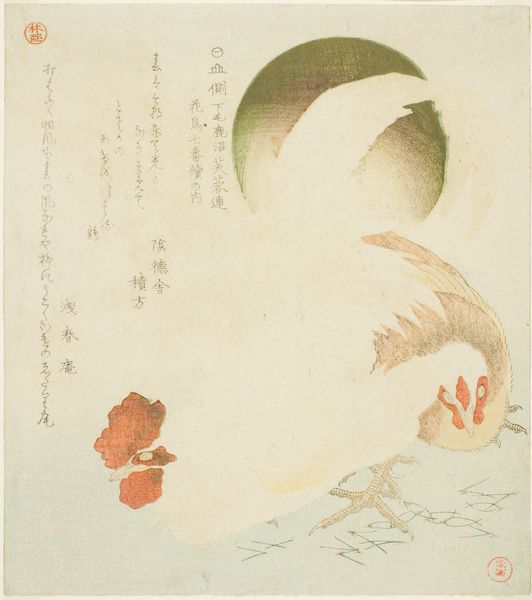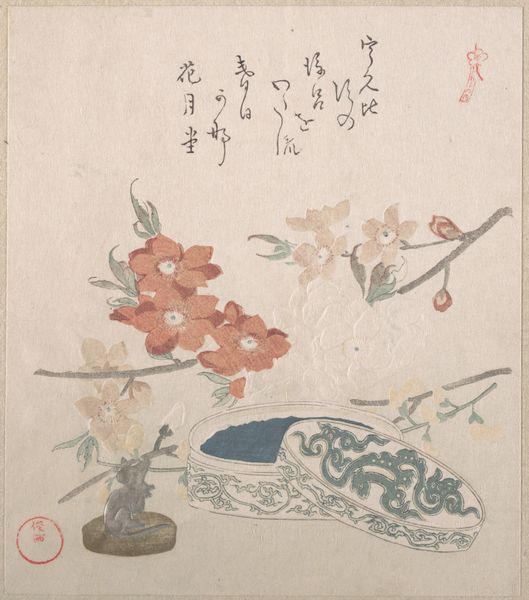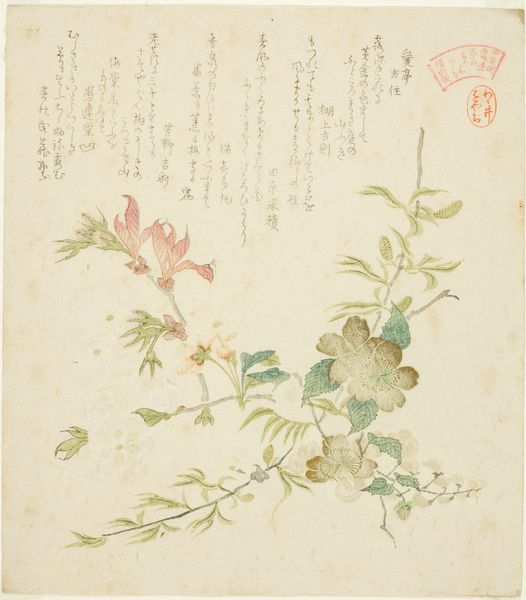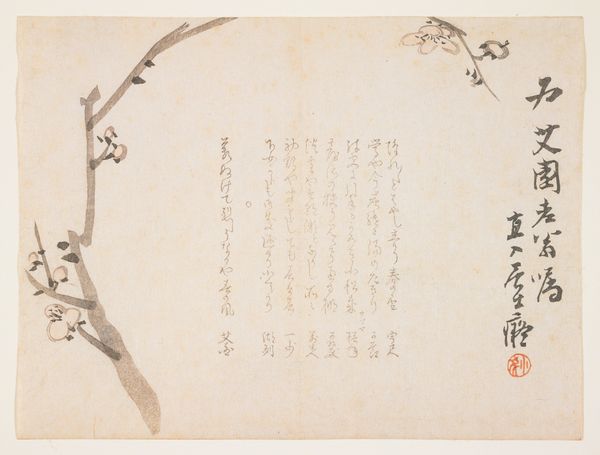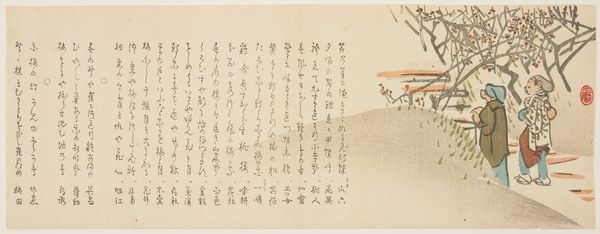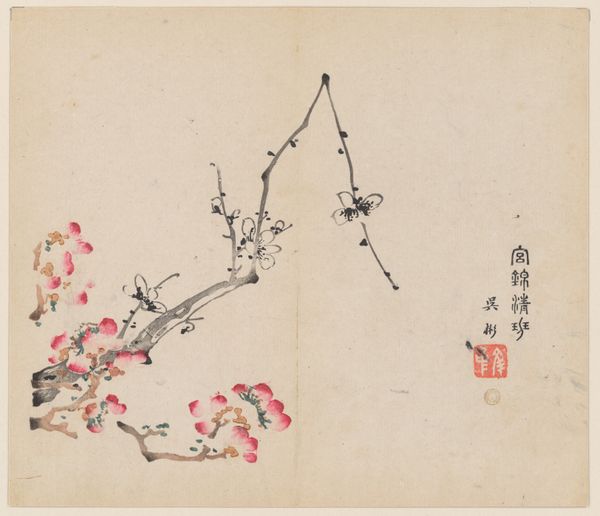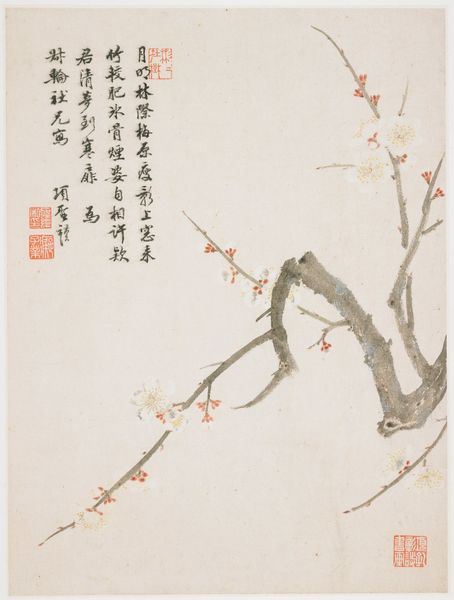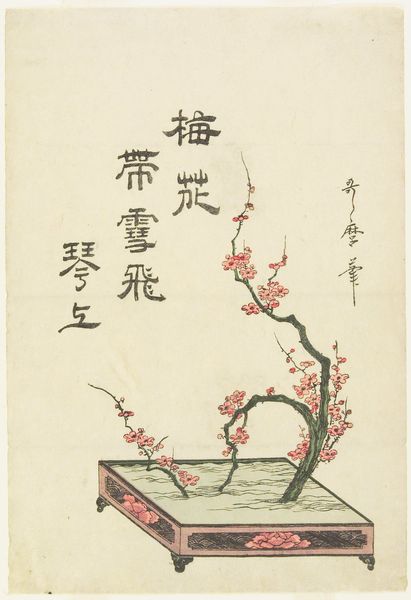
Passage 237 (Nihyaku sanjunana dan), from the series "Essays in Idleness for the Asakusa Group (Asakusagawa Tsurezuregusa)" c. early 19th century
0:00
0:00
print, woodblock-print
# print
#
asian-art
#
etching
#
ukiyo-e
#
woodblock-print
#
decorative-art
#
calligraphy
Dimensions: 21.0 × 18.3 cm
Copyright: Public Domain
Curator: My first impression is that the visual field in this print is so serene, almost sparse. Editor: It's a beautiful example of Ukiyo-e, dating to the early 19th century and produced by Kubo Shunman. This work, crafted as a woodblock print, is titled "Passage 237," extracted from his larger series "Essays in Idleness for the Asakusa Group." Curator: “Essays in Idleness” speaks directly to the symbolism of fleeting beauty within that era, yes? The brevity of existence mirrored in cherry blossoms... here seemingly clinging to the floating red band? Editor: Precisely! It emerged within a cultural landscape shaped by increasing commercialization and urbanization. Publishers would commission works to appeal to urban audiences in Edo—modern-day Tokyo—keen on fashionable art. This print exemplifies a form of artistic consumption reflecting those dynamics. Curator: And the red band? That calls to mind a votive slip, an *ofuda,* often distributed at shrines. Given its prominence and those delicate cherry blossoms, is this less about personal 'idleness' and more about spiritual meditation on impermanence for a group? Editor: Possibly so, the connection between text and image is intriguing, though. It reflects a blend of literary tradition with visual culture, catering to a literati class and evolving artistic tastes. Its delicate lines and pale color washes highlight Shunman's mastery. The writing itself, the *kanji,* flows beautifully. Curator: I read how Japanese aesthetics value suggestion over direct representation; these open spaces create almost a *void*...but filled with cultural and emotional memory. The artist is inviting reflection. It is as though these fragile flowers bloom suspended between mortal space and a plane of calligraphy. Editor: It reminds us that art doesn't exist in a vacuum. It interacts with economic and social forces. Its very creation and survival within collections like the Art Institute speak to historical dialogues surrounding preservation, cultural value, and aesthetics across centuries. Curator: To ponder what was "fashionable art" once regarded—how tastes morph and re-emerge with fresh resonance. A potent and delicate mirroring, I find. Editor: Yes, reflecting on this print and the artistic landscape that created it gives one much to consider regarding the journey of images through society.
Comments
No comments
Be the first to comment and join the conversation on the ultimate creative platform.
